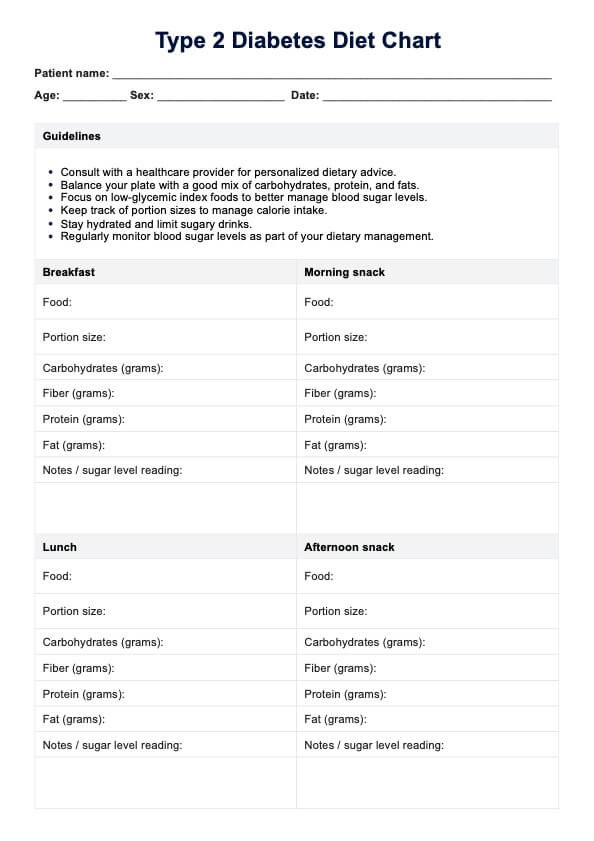A Type 2 Diabetes Diet Chart is often requested by individuals diagnosed with Type 2 diabetes who are looking to manage their condition through dietary adjustments. Healthcare professionals such as dietitians, endocrinologists, and diabetes educators also recommend these charts to their patients as part of a comprehensive diabetes management plan.

Type 2 Diabetes Diet
Discover our comprehensive Type 2 Diabetes Diet Chart with practical examples. Download our free PDF guide to manage your diet and health effectively.
Type 2 Diabetes Diet Template
Commonly asked questions
Type 2 Diabetes Diet Charts are used to plan and monitor daily food intake. They guide the user in choosing suitable foods in appropriate amounts to maintain stable blood sugar levels. Users typically record their meals and snacks, aligning them with the recommendations on the chart, and use this information to make informed dietary choices.
The time it takes to utilize a Type 2 Diabetes Diet Chart effectively varies depending on individual needs and goals. It's an ongoing tool used for daily meal planning and monitoring. Regular review and adjustment are recommended, as dietary needs may change with health status, lifestyle, or specific diabetes management goals.
EHR and practice management software
Get started for free
*No credit card required
Free
$0/usd
Unlimited clients
Telehealth
1GB of storage
Client portal text
Automated billing and online payments











